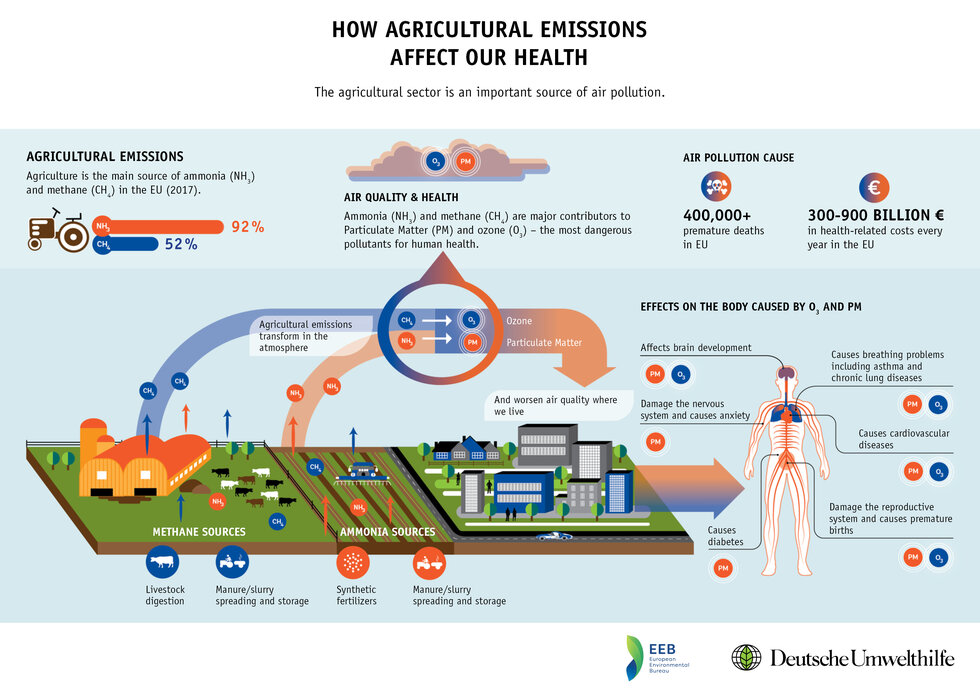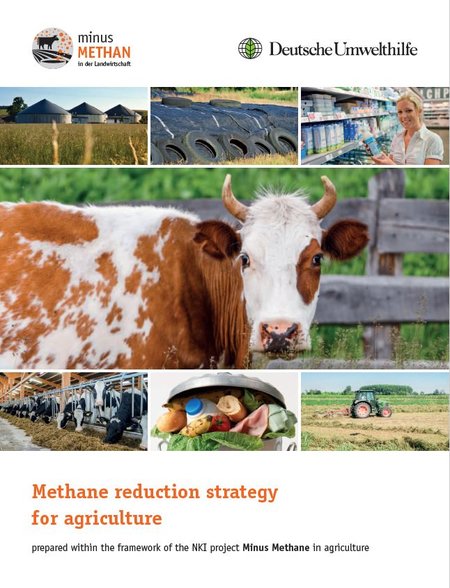

Ammonia
Ammonia reacts rapidly with nitrogen oxides and sulphur dioxide to form particulate ammonium sulphates and nitrates. These particles are so-called ‘secondary inorganic aerosols’ (SIAs) and account for a considerable proportion of the total particulate pollution in the air. Known as PM2.5 due to their small diameter of 2.5 micrometres (1000th of a millimetre) or less, they can penetrate deep into the respiratory tract, remain there longer and cause lasting damage to the lungs. Particulate matter is partly responsible for lung and cardiovascular diseases, heart attacks and cancer. It influences the central nervous system and the reproductive organs. In 2019, there were 307,000 premature deaths in EU from particulate matter pollution with PM2.5 (EEA Air Quality Report 2021). Finally, ammonia from agriculture contributes significantly to the excessive deposition of atmospheric nitrogen to natural ecosystems and causes eutrophication, acidification and thus the loss of plant species. Especially low-nutrient landscape systems such as marshland and forests suffer from nitrogen input. Air pollution already affects 63 percent of European ecosystems and 73 percent of NATURA 2000 sites.

Methane
Methane has a global warming potential (GWP100) about 28 times higher thanCO2 (IPPC Report 5) and is one of the short-lived climate pollutants. Additionally, methane also deteriorates regional air quality. Photochemical oxidation processes in the atmosphere produce carbon monoxide (CO) and ozone (O3) from methane. The ozone remains on ground level, where it not only impaires the production capacity of crops and forests, but also has severe impacts on human health. Ground-level ozone leads to or increases asthma, chronic respiratory diseases, allergies and cardiovascular diseases. In 2019, ozone was responsible for 16,800 premature deaths within the EU member countries (EEA Air Quality Report 2021).
Minus Methane - Strategies to reduce emissions (DUH, 2019)
Read our background and strategy paper here.


